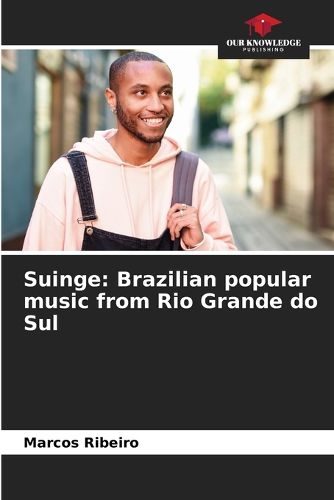Readings Newsletter
Become a Readings Member to make your shopping experience even easier.
Sign in or sign up for free!
You’re not far away from qualifying for FREE standard shipping within Australia
You’ve qualified for FREE standard shipping within Australia
The cart is loading…






The aim of this dissertation is to understand how meaning is produced through suingue or samba-suingue, a genre of Brazilian popular music that emerged in Rio Grande do Sul in the 1960s. The research took into account historical aspects and features of its practice, identifying characteristics and singularities, based on issues of musical genre and cultural identity. The methodology of this work consisted of a case study on samba-suingue, plus a literature review and interviews, which served to cross-check information and compare some of the conclusions of this analysis, which discusses the characteristics found in this genre. For the author, the motivation for carrying out this work arose from the realization of some gaps often present in the approach to this genre in Brazilian popular music. It was concluded that suingue is a specific way in which the people of Rio Grande do Sul play samba on the guitar, where the rhythm played corresponds to the accent, i.e. the way of speaking influences the way of playing, resulting in the so-called "3 no 2", an expression used to highlight the rhythmic division.
$9.00 standard shipping within Australia
FREE standard shipping within Australia for orders over $100.00
Express & International shipping calculated at checkout
The aim of this dissertation is to understand how meaning is produced through suingue or samba-suingue, a genre of Brazilian popular music that emerged in Rio Grande do Sul in the 1960s. The research took into account historical aspects and features of its practice, identifying characteristics and singularities, based on issues of musical genre and cultural identity. The methodology of this work consisted of a case study on samba-suingue, plus a literature review and interviews, which served to cross-check information and compare some of the conclusions of this analysis, which discusses the characteristics found in this genre. For the author, the motivation for carrying out this work arose from the realization of some gaps often present in the approach to this genre in Brazilian popular music. It was concluded that suingue is a specific way in which the people of Rio Grande do Sul play samba on the guitar, where the rhythm played corresponds to the accent, i.e. the way of speaking influences the way of playing, resulting in the so-called "3 no 2", an expression used to highlight the rhythmic division.